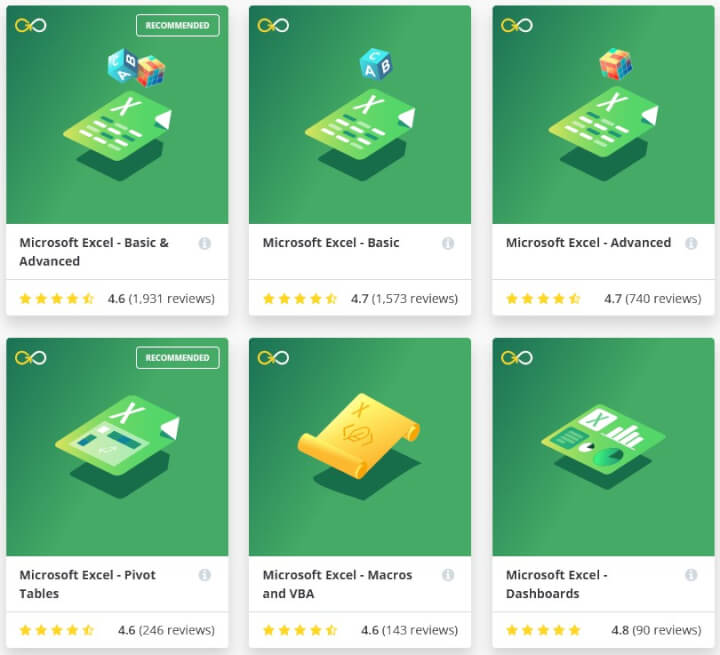Alvin Tofler once said:
Tomorrow's illiterate will not be the man who can't read; he will be the man who has not learned how to learn.
He will also be unemployable. The author of Future Shock imagined how vital learning will become to the survival of the 21st Century professional.
Artificial intelligence will create more jobs than it will destroy, but it's always better to hedge your bets by staying on the path of continuous professional development. It's also worthwhile to design your own learning path and take ownership of your future.
Thanks to the information-rich internet, it's an easier task than you could have imagined a decade before. But where should you start? In this article, we’ll explore how to design your own professional development plan.
Use our free professional development plan sample template to help guide you in mapping out your career goals and how to achieve them.
Want more productivity tips?
Take your productivity to the next level with our comprehensive (and free) ebook!
1. Carry out a personal SWOT analysis
Companies tend to look at career development as one-size fits all. But your own learning goals can include skills that aren't a part of your job description. You can continue to add muscle to your strengths, and plug weaknesses.
When you are undecided about your path, a personal SWOT analysis template (Strengths, Weaknesses, Opportunities, Threats) is a good starting point. This basic business tool can be turned into one for finding your blind spots. It can help you gauge where you are and where you could be. Swot analysis templates for a variety of purposes are available for download online.
Tip: MindTools has a toolkit and worksheet that can help you know yourself better. Other sites like Template.net also carry free templates you can download.
2. Do a passive job hunt for skills in demand
A passive job seeker waits for employers to come knocking. But let’s tweak this definition a bit. Let’s say, you don’t want to leave your company but just want to find out the skills in your own industry. Job boards are a great way to check out the skills with increasing demand and benchmark yourself in the market.
You should look within your own company first because it’s an easier opportunity for a lateral movement, to network with peers, or just to find a mentor who will support your learning goals.
Tip: LinkedIn is a good place to start. You can use the Salary Insights feature as a yardstick. Check endorsements of your peers to find gaps in your own skill sets. Premium features get you more personalized insights like your job rank and company hiring trends.

3. Research learning paths
A professional development plan can be short term or have a longer horizon. Either way, you have to identify your learning needs and develop a roadmap. A structured course does the work for you. But what if you want to design your own learning?
Spend as much time as it takes to research the learning path. In simple words, you must find the best material to learn from and structure it into a discrete step by step plan with schedules and feedback tests built in.
You don’t have to find everything in one place. Use multiple resources like videos, textbooks, tutorials, and articles. Your personal curriculum shouldn’t deluge you but suggest the direction.
Tip: Industry certifications often mention the things you need to study before the exam. Subreddits like Find a Path also work like recommendation sources.
Want more productivity tips?
Take your productivity to the next level with our comprehensive (and free) ebook!
4. Become an expert in an emerging technology
The 21st Century has seen a lot of technology disruptions. Every disruption is also a ripe opportunity to get ahead of the pack by quickly upskilling in that area.
You might want to learn web development, and focus specifically on a particular language that is skyrocketing in popularity and job listings, like Python. Or, you might focus on a set of complimentary skills that relate most to your ideal job.
It might be a niche, but subject-matter familiarity can help as your bosses might respect your initiative and make you the key person in a team.
Don’t wait for the disruption to arrive. To improve your binocular vision, attend conferences, read industry journals, and keep tabs on venture capitalist investments among other things.
Tip: Get your hands on any publicly available training first. Follow key influencers on social networks like Twitter to understand the scope of the game changer.
5. Enroll in the right courses
You have explored and narrowed down your criteria. Now, you want to support your personal development with some training. Online courses give you more flexibility and wider options than in-person training. But how can you be certain that this is the right course for you?
Look at the course content and decide if it supports your learning goals and if it is up to date.
Do due diligence on the platform — subject matter tutor, cost, and student feedback among other things. If it’s an accredited course, check the claim with the awarding body and industry feedback if any.

Tip: Take a free trial if it's available, or take a short free course first (maybe from the same instructor) and see if the topic and pedagogy suit you.
6. Use the power of microlearning
The best way to eat an elephant is one bite at a time. It is the same with learning a new skill. Microlearning and the handiness of mobile apps allow you to learn on the go in the little snippets of time you have in the day. It’s not great for focused study, but microlearning can be a good tool for revision and practice.
Is there a gamified app for your subject? Or can you find an on-demand course with short units? The good news is that companies are recognizing the benefits of microlearning and blending them into their enterprise LMS.
Tip: You can use microlearning to support your learning path by taking in information in bite-sized chunks whenever you have time. GoSkills offers bite-sized courses as a microlearning option. Infographics and short modular tutorials are also well-suited for learning on the go.
7. Promote your new skills
Putting your skills into practice will not only make you more visible but also work like a feedback loop. You can quickly correct what’s going wrong and save yourself a lot of time with your learning project.
You can apply for roles that support your learning goals. For instance, you can volunteer to give a presentation and then use it to ask for advice from your audience.
Remember, people won't know what skills you have unless you tell them. Add any certificates you've earned, skills you have gained, and volunteer experience to your LinkedIn profile, website and resume to make sure you're promoting your talents to those who need to know.
Tip: Want to know about a surefire way to cement your learning? Teach what you know. Find opportunities to teach others and you will not only fill the gaps in your own understanding but also look at the material in a new way.
8. Keep a journal
A journaling habit can help you reflect on your learning experiences as you move from one topic to another. You can start by charting your learning roadmap and the competencies you need to acquire. This can be cross-referenced against the SWOT exercise you did in the first stage.
Then see how you fare and use that to spot any weaknesses. The checkmarks on the wins can serve as a motivational tool for your solo learning journey.
Tip: You can even create a lightweight journal in Excel or Google Sheets. Search for journal templates online and then tailor them to your learning plans.

9. Seek a mentor
Where would Luke be without Yoda? We all wish for a Mr. Miyagi in our lives. The role of a mentor can help to clear the way through all the points mentioned above.
Mentoring works best when it’s part of the company’s own developmental programs, but you should proactively seek someone out yourself. Look into your own network first. And don’t be afraid to ask.
Tip: Look for a connection between your work and what they are doing right now.
10. Forge a growth mindset
Taking responsibility for your own learning can fill you with doubts. Training a growth mindset is critical here because you should now learn to fall in love with learning, regardless of the outcome and the setbacks you might meet on the way.
Carol Dweck coined the term “Growth Mindset” and promoted it in her well-recommended book, Mindset: The New Psychology of Success. She says:
[...] it’s not about immediate perfection. It’s about learning something over time: confronting a challenge and making progress.
People with growth mindsets also believe that interests aren’t inherent, but they can be developed.
Tip: As she advises in her book, approach every problem as a challenge and think that you just haven’t solved it yet.
Bonus tip: keep learning from your peers
Don’t forget that your peers are the daily touchpoints for incidental learning. They can help you gather more input for your professional development plans.
Maybe, some of them are on the road just ahead of you. Maybe, those who haven’t started can be brought on to your “collaborative learning team” and that’s definitely more fun.
Learn in-demand skills to future-proof your career
Alvin Tofler also said, “If you don't have a strategy, you're part of someone else's strategy.”
So, make time and move to the first step of your action plan today.
GoSkills has an award-winning library of courses in subjects like Excel, project management, coding, lean six sigma and more to help you upskill and gain the right knowledge for your professional development plan.
Try GoSkills courses today for free and gain the skills you need to get to the next level of your career.
Start your free trial
Get access to 110+ bite-sized courses, taught by award-winning instructors
Start free trial



